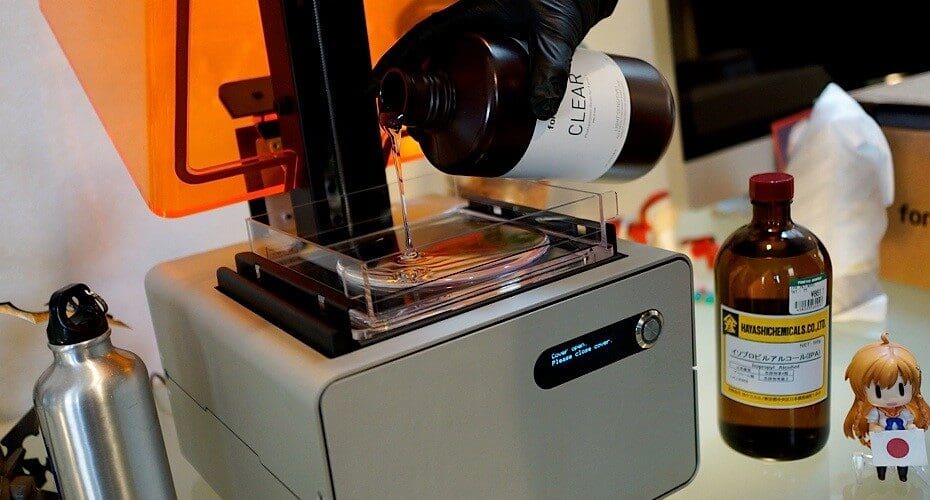In the domain of resin-based 3D printing, specifically in Stereolithography (SLA) and Digital Light Processing (DLP) technologies, the resin tank holds a place of critical importance. It is here that the liquid photopolymer resin is contained and selectively cured to form intricate three-dimensional objects. This article explores the resin tank’s role, maintenance, and challenges, shedding light on how this component impacts the quality and efficiency of the printing process.
Importance of the Resin Tank in 3D Printing
Holds and Conditions Resin: The primary function of the resin tank is to hold the photopolymer resin that is used in the printing process. It ensures that the resin remains in a controlled environment, ready to be selectively cured into solid parts.
Facilitates Curing Process: In SLA and DLP printers, the resin tank is usually transparent at the bottom, allowing a laser or light projector to cure the resin from underneath. This setup is crucial for the layer-by-layer building process.
Maintains Print Quality: The quality of the resin tank, including its cleanliness and the condition of its non-stick coating, directly influences the quality of the prints. Any imperfections can lead to flaws in the final product.
Minimizes Resin Waste: By allowing for the precise management of resin volume and minimizing exposure to external elements, the resin tank helps in reducing resin waste, making the printing process more economical and environmentally friendly.
Components of a Resin Tank
Tank Body: Typically made from acrylic or other durable, transparent materials, the tank body is designed to withstand the corrosive nature of photopolymer resins and repeated exposure to UV light or lasers.
Transparent Bottom: For SLA and DLP printers, the bottom of the tank must be clear and free of any blemishes or cloudiness to ensure unobstructed light transmission for curing the resin.
Non-Stick Coating: Many resin tanks are coated with a non-stick layer, such as silicone or fluorinated ethylene propylene (FEP), to prevent the cured resin from adhering to the tank bottom, facilitating easier part removal and tank cleaning.
Resin Mixer: Some advanced resin tanks include a mechanism to stir or agitate the resin gently, ensuring that pigments and other components are evenly distributed and do not settle at the bottom.
Installation and Maintenance of Resin Tanks
Proper Installation: Ensuring that the resin tank is properly seated and secured within the printer is crucial to prevent leaks and to align it correctly with the build platform and light source.
Regular Cleaning: Resin tanks require regular cleaning to remove any failed prints, partially cured resin, and other debris. This maintenance is crucial to prevent defects in subsequent prints.
Monitoring Resin Levels: Keeping an eye on resin levels is important to ensure there is enough material for a print job while avoiding overfilling, which can lead to spills and contamination.
Tank Replacement: Over time, the clear bottom of the tank can become clouded or scratched, which can impede the curing light. Monitoring the tank’s condition and replacing it when necessary is essential to maintain print quality.
Challenges and Solutions
Resin Sensitivity: Photopolymer resins can be sensitive to ambient light and temperature, which can affect their viscosity and curing properties. Operating printers in a controlled environment is key.
Wear and Tear: The non-stick coatings and the transparent bottoms of resin tanks wear out with use. Using tank liners or regularly replacing tanks before they affect print quality can help mitigate these issues.
Resin Contamination: Keeping the tank free from dust, fibers, and other contaminants is essential. A contaminated tank can lead to imperfections in the prints, such as bumps or holes.
Chemical Handling and Safety: Handling resins and cleaning tanks involve exposure to chemicals that can be hazardous. Proper safety equipment, like gloves and masks, should always be used, along with good ventilation.
The resin tank is a fundamental component of any resin-based 3D printer, pivotal in ensuring that the printing process is smooth, efficient, and yields high-quality results. Proper maintenance and timely replacement of the resin tank are critical for the longevity and success of 3D printing operations. By understanding the intricacies of resin tank management, users can greatly enhance their printing capabilities and maintain a high standard of print quality, ensuring that each project reaches its full potential.








